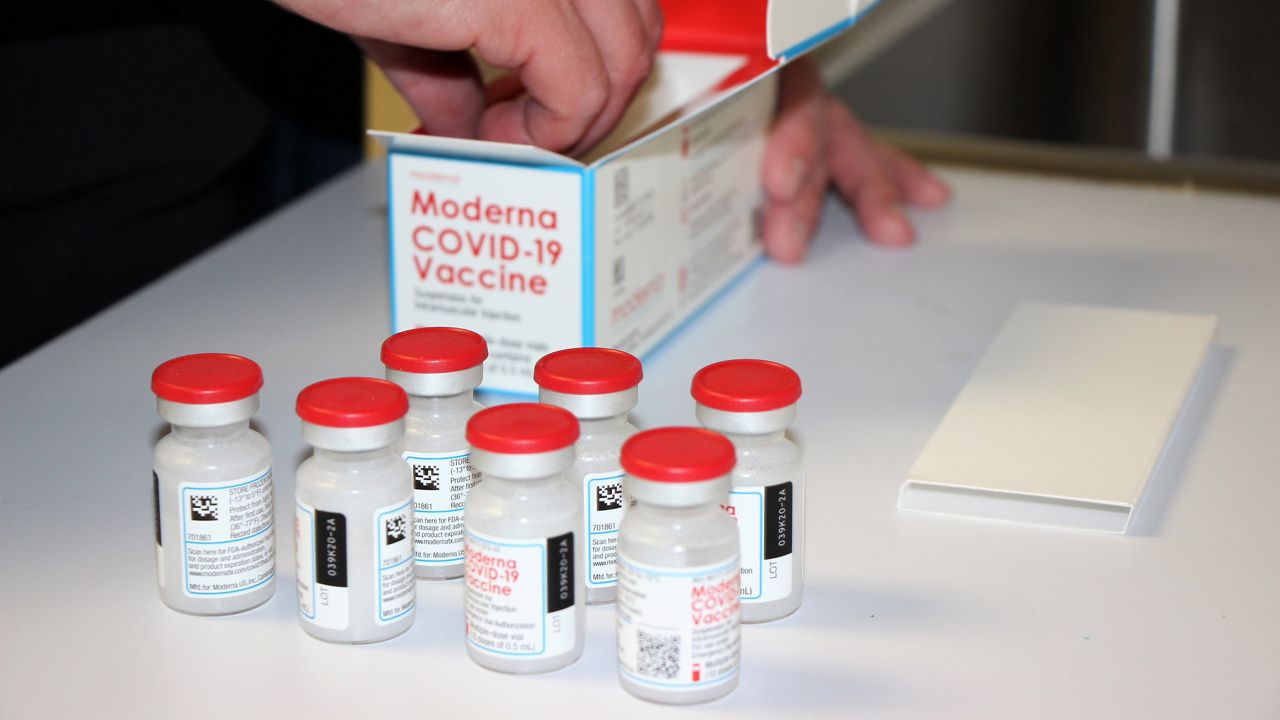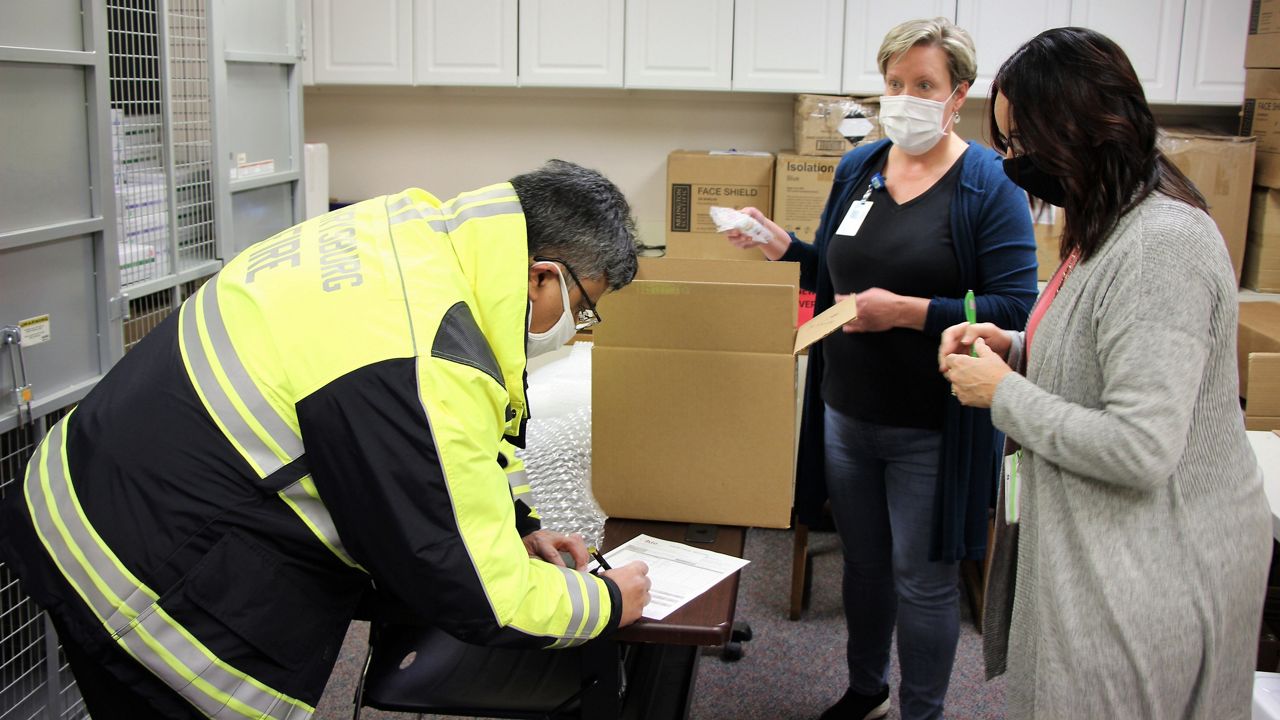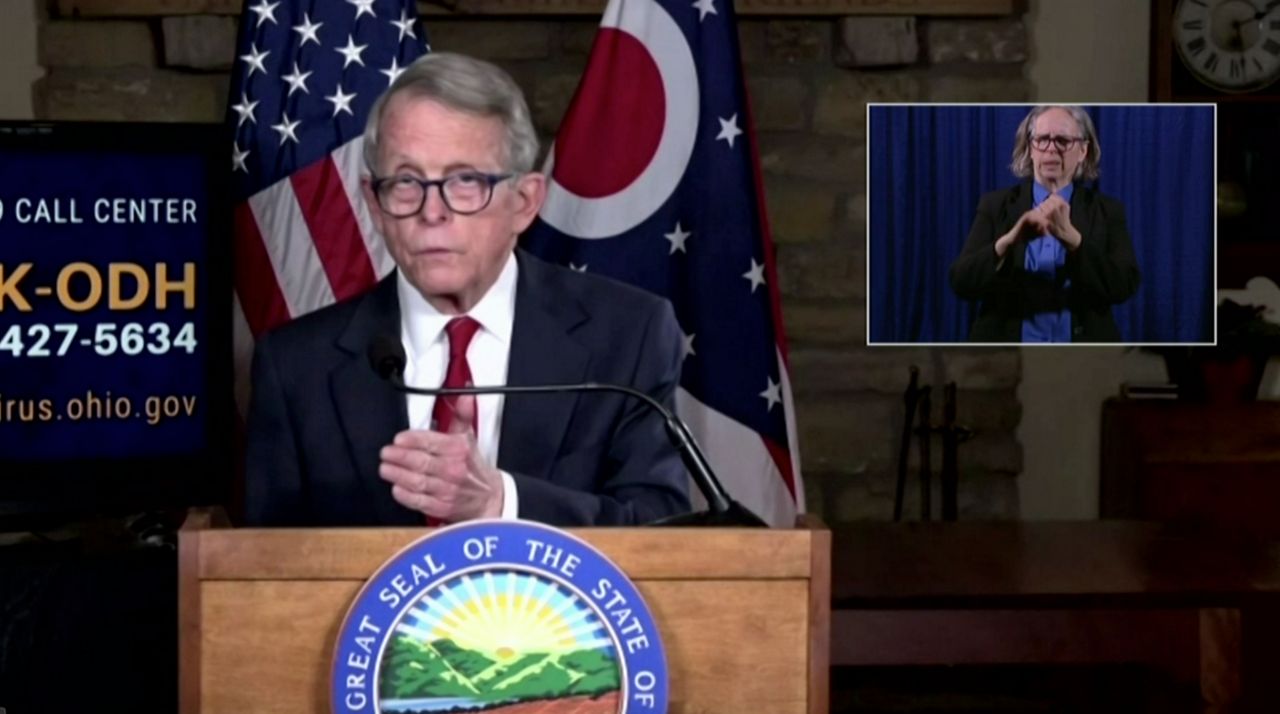COLUMBUS, Ohio — Gov. Mike DeWine extended Ohio’s curfew Wednesday and called for an added sense of urgency in the vaccine administration effort, announcing hospitals will be expected to administer doses within 24 hours of receiving them.
Ohio's curfew, which prohibits non-essential activities after 10 p.m., will be extended to Jan. 23, DeWine announced at a briefing Wednesday afternoon, his first appearance during the holiday week. Under curfew, most gatherings and social activities are barred, and indoor service at restaurants winds down an hour earlier than the 11 p.m. COVID-19 last call rule Ohio was under during the summer months.
On his disappointment with the pace of the vaccine rollout, DeWine said the state cannot control how many doses it is allocated, but once they arrive there is a “moral imperative” to quickly administer the doses received.
Earlier Wednesday DeWine went directly to the source and told hospital officials to step it up, he said.
“I looked at what I was seeing and didn't like what I was seeing, and I talked to the people who I thought could change it,” DeWine said. “We are asking our hospitals when they get the vaccine to do everything in their power to get that vaccine out into people’s arms within 24 hours, and then to report it back to the state,” DeWine said. "24 hours to get it in; 24 hours after that to get a report.”
DeWine to hospitals: Speed it up
The governor said some hospitals “knocked it out” when they received their shipments, administering them rapidly, but others just aren’t moving fast enough, he said. In some case, it is not their fault, he said, citing shipments that were delivered late.
“It's not always going to be possible,” DeWine said of the new 24-hour timeframe. “Nothing's ever perfect, but that should be the goal, that should be the standard.”
The latest vaccine update from the state included an allocation of 69,700 Moderna doses that began arriving at hospitals earlier this week, as well as this week's allocation of 70,200 Pfizer doses, which will arrive along with a 98,475-dose Pfizer allocation that represents the second shots for the first group of Ohioans who were immunized.

In some cases, vaccines are administered promptly but the breakdown comes in the form of slow reporting, the governor said. In other cases the state’s distributors just aren’t moving fast enough.
“I'm not satisfied with where we are in Ohio. We're not moving fast enough, but we're going to speed this thing up,” DeWine said. “This is not a day for fault. This is a day for inspiration. Let's move and let's get it done.”
Moderna and Pfizer "flow" in
As of Christmas, Ohio had been sent more than 390,000 doses of the Pfizer and vaccines, just a bit shy of an estimate fromDeWine that Ohio would receive more 420,000 doses by the holiday. By Wednesday’s update, 94,078 Ohioans had received the vaccine.
Ohio has begun immunizations of emergency medical personnel and other non-hospital health care workers. Health departments are administering those shots using Moderna’s vaccine, which is easier to handle for non-hospital distribution sites that may lack the resources for Pfizer’s ultra-cold temperature requirements.
Last week, 89,700 doses of the vaccine were distributed to Ohio’s four pharmacy partners responsible for immunizing long-term care facilities, an Ohio Department of Health spokesperson said. With that allocation, Ohio began the second phase of long-term care facility immunizations, which includes assisted living facilities, residential care facilities, care facilities for individuals with developmental disabilities, and continuing care retirement communities, officials said.
Ohio expects to receive “a little more” than 529,900 doses by the end of the year. The figure was brought down from an earlier projection of 660,000 doses. Many other states saw similar reductions when they were informed fewer Pfizer doses would be shipping out than previously expected.
While Pfizer began distribution first, by year end Moderna is expected to have distributed more doses to Ohio than Pfizer. The latest projections show Ohio receiving 271,000 Moderna doses and 258,000 from Pfizer.

Disappointed by some of the early numbers, DeWine gave his strongest plea yet for Ohioans to take the vaccine. While he said no on will be required to get the vaccine, he urged family members to tell their relatives in nursing homes to think again if they are skeptical.
There is good news and bad news from the nursing home rollout, DeWine said.
DeWine said nursing homes have not fallen behind pace, and they are still on track to complete immunizations in a months-time. He praised the work of the state’s pharmacy partners, CVS, Walgreens, Absolute Pharmacy, and PharmScript.
A high rate of residents, about 80%, are getting immunized. Only about 40% of nursing home staff are opting to take the shots, a figured the governor said found disconcerting. The figures were based on early “anecdotal” assessments.
Unless they have some reason they cannot get immunized, “You might want to talk to them and urge them to do that.” DeWine said. DeWine said it is imperative to protect those “fragile” populations.
"As anybody who knows me very well, I'm impatient,” DeWine said. “And being that impatient person, the numbers that I was looking at on our dashboard were not going up, frankly, as fast as I thought that they should.”
Lifting classroom quarantines
DeWine said Ohio would be lifting quarantine requirements for school children and staff exposed in classroom settings, a major announcement in the state’s plan to reopen schools by March 1.
Previously even in classroom settings with masks, anyone classified by the Centers for Disease Control and Prevention as a “close contact” of an individual who tests positive for COVID-19 would have been instructed to quarantine.
State officials say they hope to make vaccine doses available beginning mid-January to all staff of any school district that commits five-day in-person learning models. The plan raised questions how schools would keep unvaccinated students safely distanced in the classroom. Some schools may need to switch to 3 feet distance due to their facilities to fully reopen their schools.
The governor said it is unacceptable for a holiday to slow down the vaccine rollout.



